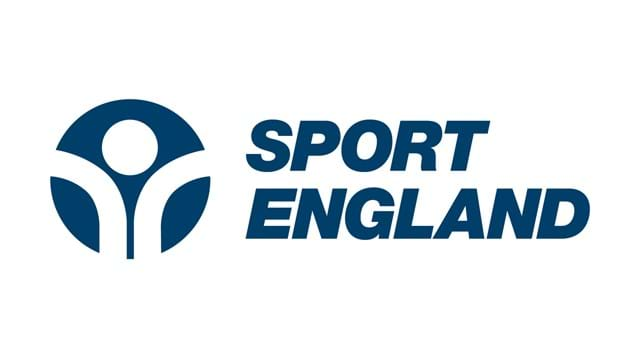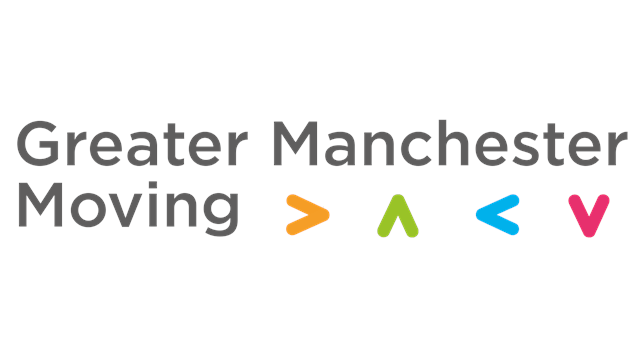That Counts! campaign makes progress towards goal of getting 2 million GM residents moving
That Counts! launched in September 2019, and in just a short amount of time is already having positive impacts across Greater Manchester. Find out more about the campaign to date, and what's still to come.
Share
That Counts! is our campaign to help get two million Greater Manchester residents moving by 2021.
It’s encouraging people across Bolton, Bury, Manchester, Oldham, Rochdale, Salford, Stockport, Tameside, Trafford and Wigan to start moving more and share ways to fit activity into everyday life. Our vision is to make Greater Manchester the most active region in England.
The campaign has adopted a tough challenge – focusing primarily on those who are inactive and getting them to move more. By adopting a friendly, accessible approach – not preaching or nagging – it’s already making an impact. Just three months into the two-year campaign, research shows it has increased the intention to exercise and self-reported activity levels have risen. The future looks bright, and the campaign is already attracting interest from other parts of the UK.
Physical inactivity is one of the UK’s biggest societal problems; it is responsible for one in six deaths and costs the UK £7.4 billion annually (source: Public Health England).
Across the Greater Manchester region, inactivity levels are persistently higher than the national average; more than half a million adults are classed as inactive (less than 30 minutes activity a week).
That Counts! is a marketing campaign that is tackling the challenge head on in the region. It aims to deliver whole population behaviour change – with a specific focus on the most inactive groups.
The great news is that the early indications are that the approach is working. Just three months into the two-year campaign, research shows it has increased the intention to exercise and self-reported activity levels have risen:
- 26% of people said they were inactive before the campaign; three months later this dropped to 22%
- 82% of people who had seen the campaign said they were doing more activity than the minimum – compared to 76% who were unaware.
The campaign specifically encourages people who are inactive to become more active, focusing on three main cohorts: people with a long-term condition; parents with children; people who are workless/at risk of worklessness.
Understanding barriers to inform the creative campaign
Research carried out early in 2019 to inform our campaign showed barriers to people becoming more active were:
- Not understanding activity guidelines
- Feeling too busy to add new activities
- The language of ‘sport and exercise’ not resonating with many
- People with health issues feeling unable to physically achieve more activity
- Cost an issue for people with lower incomes.
Our strategy was to show that being more active:
- Is achievable at your own pace,
- Does not have to cost anything,
- Is easier than you think and can be integrated seamlessly into your day.
Creating the campaign
To overcome the barriers identified in the research, it was important the campaign creative felt recognisable and achievable. It was decided to use visuals and stories of local people doing everyday activities in ways that suit them; these ‘local heroes’ were the centre of the campaign.
Campaign language ensured messaging was positive, simple and achievable, not nagging/guilt-tripping or too highbrow. A particular effort was made to translate often confusing government activity guidelines into easily understood messages (eg. 30 min a day).
Market testing
Behaviour change is challenging, so it was important we chose the right creative concept. We therefore adopted a short phase of creative-testing research with key target audiences immediately after the pitch and before confirming the winning campaign.
Collaboration throughout
That Counts! has a whole-system ambition; representatives of key partner organisations (eg. accessibility charities, NHS organisations) were involved right from the start, including at the pitch to find the right marketing agency partners.
A partnership presentation ensured all 10 GM boroughs knew how the regional level communication would be implemented and could access/localise campaign materials. A digital toolkit provides customisable assets to ensure the campaign can be localised with consistency, by organisations large and small.
Launching the campaign in September 2019
In Phase One (Sept-Nov 2019), the following channels were used.
Paid advertising
- 5-week Hits Radio Manchester partnership, integrating presenter-led credits with 30” airtime (delivering 10.7m impacts);
- Extensive outdoor campaign comprising 49 x poster sites; 160 x bus panels; 145 x poster sites on the Transport for Greater Manchester network; 120 x tram interior panels and 10 x lift vinyls
- 21 adverts across seven regional titles (including Manchester Evening News)
- 5 million Facebook / Instagram carousel impressions, achieving 10% ad recall (2% above industry benchmark)
Social media (organic and paid)
- That Counts! Instagram, Facebook and Twitter accounts achieved the following reach. Instagram (593,593 post impressions); Facebook (4,424,121 post impressions Twitter (193,415 post impressions).
Earned news media (PR)
- 30 x editorial items, including 6 x broadcast, delivered across region-wide and local news outlets and in wider channels such as ITV Good Morning Britain. Reach: 2.88million people.
Digital toolkit: 100 partner organisations downloaded key campaign assets, extending reach and enabling customised messaging at a granular local level.
Measurement
Attitudes, perceptions, intention and stated behaviour (level of activity for individuals and their children) are being closely tracked throughout the campaign.
Three waves of research are planned across the two years; two waves have been completed, including a benchmark before the campaign started and a second wave to measure the impact of Phase One activity.
The surveys are online and consist of a representative 500 people in the Greater Manchester area, with a booster sample of three key cohorts; those with long term health conditions, those out of work and young people & families.
Market research across the 10 boroughs of Greater Manchester shows:
- The campaign has cut through: one in 10 people spontaneously recall seeing That Counts! In all, a quarter of GM residents recall seeing at least one of the ads.
- Key messages are landing – particularly with young people/families (a key target cohort). After being shown the advertising, 87% of people agreed with the statement ’30 minutes of activity each day has many benefits to my health’ (91% among young people/families).
- The campaign is reaching those who are inactive – and is resulting in increased physical activity. Before launch, 26% of people said they were inactive; that dropped to 22% three months later. After the launch, 74% agreed with the statement ‘I’m going to try to be more active each day’, including 68% who are inactive. 82% of people who were aware of the campaign said they were doing more activity than the minimum – compared to 76% who were unaware.
- Attitudes are shifting; post-launch, 87% of those aware of the campaign agreed with the statement ‘all physical activity counts towards my daily health goals’ – up from 77% before.
This is encouraging evidence that the campaign is helping Sport England to deliver on its mission to:
- Give everyone in England the chance to benefit from sport or physical activity
- Through the That Counts! pilot, help get two million Greater Manchester residents moving by 2021 and for Greater Manchester to become a more active region
- Target the physically inactive.
Looking ahead to the rest of 2020
The main aim of Phase One was to raise awareness of the importance of activity, and to increase the intention to move more. Evidence shows that attitudes are starting to shift and that activity levels are already improving (see Impact reviews).
Phase Two launches on 9th March 2020, shifting the dial of focus from awareness to engagement in efforts to escalate this level of behaviour change achieved. It will span a 17-week period, with outdoor and social advertising providing baseline coverage, whilst Capital Manchester and further community-based radio stations will support from a broadcast perspective. Organic social media and PR will run in tandem.
The campaign creative will focus on a new wave of ‘local heroes’ who will address the target cohorts’ pain points:
- How to fit moving more into a busy day (general inactive)
- How to fit moving more round family life (parents with children)
- How to move more when you’re not feeling up to it (LTHC)
- How to get fit for free (workless)
After this phase, the campaign will move into a highly localised approach. Individual areas will be encouraged to launch their own campaigns to push messaging further down at a local level.
Organic social media activity will continue throughout all phases and will evolve to support the campaign and refine the messaging based on continual evaluation.
Why That Counts! matters
- Because changing habits like levels of physical activity is extremely difficult – but the evidence shows that after just one burst of activity, we are already making a difference.
- Because the campaign is targeting the most inactive and helping to reframe their understanding of what counts as ‘exercise’ – making physical movement more achievable.
- Because – unlike so many marketing campaigns that are ‘top down’ inclusivity and accessibility are at the heart. Close partnership working is helping the campaign resonate with the people it needs to reach.
For more information about That Counts! contact the team at [email protected]
Latest News

Sport England release latest Active Lives data
The latest data regarding adults activity levels across the Country have today been released.

The Big Help Out is back for 2024
Around 6 million people got involved in May 2023 and it's back for a weekend in June.

